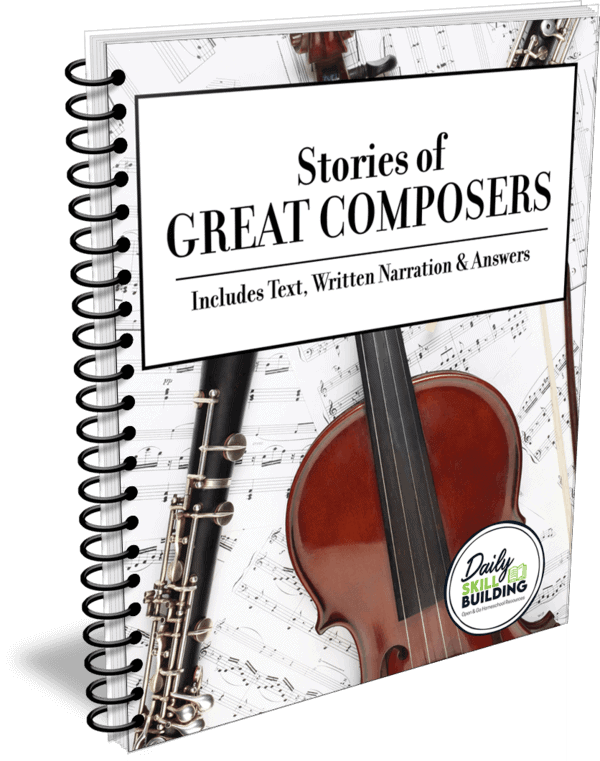Famous People Notebook: Scientists
We’re going to take a look at the lives and work of ten famous scientists from around the world. Each of these individuals contributed to what we understand about the world today.
Even though none of them got everything right, they discovered and learned new things that helped the scientists who came after them learn more. In this way, each left a special legacy that continues to impact us today.
Your child will discover by 10 famous scientists through 10 self-contained lessons. The lessons are constructed in a simple format: short and informative text followed by comprehension questions and a space for written narration.
Scientists Covered in Famous People Notebook: Scientists:
- Nicolaus Copernicus
- Galileo Galilei
- Johannes Kepler
- Blaise Pascal
- Isaac Newton
- Benjamin Banneker
- Gregor Mendel
- Louis Pasteur
- Joseph Lister
- Albert Einstein
How to Use Famous People Notebook: Scientists
You are welcome to complete each lesson in any order that suits your current study or interest. However, please note that completing the lessons in order will provide your student with basic understanding of how one scientist’s discovery lays the foundation for another scientist’s discovery.
Each lesson begins with a short and informative text about the famous scientist. Your student may read the lesson to himself or aloud then answer the comprehension questions. There is a space provided for written narration. To aid a student who struggles with reading comprehension we suggest using the comprehension questions as writing prompts for this section. A parent or teacher may read the text and/or the questions orally if that is beneficial to your student.
Skills Taught:
- Reading comprehension
- Critical thinking
- Notebooking
- Research
Vocabulary Terms
Suggested vocabulary words are bolded to easily prompt the student to take notice. We suggest having your student look up any unknown bolded words to encourage proper understanding of the text. You may want to have your student create a notebook with the words and definitions. The student may look up the words in another source, however, there is a glossary at the end of the study.
Scientists Research Project
Once the student completes the comprehension questions and written narration there is a section for additional information. At the end of the study, your student will select his favorite scientist to study further with additional resources of his choice and then write a narration on the paper provided. Lastly, there is a final review quiz for your student to complete.
*Answer keys for comprehension questions for each lesson and final review quiz are provided.










Katherine Tanyu –
I really *heart* this Famous People notebook–we can combine history, geography, and science! Each lesson is very short and age-appropriate (elementary to middle school). There is a Scientist Review in the end, so the student can connect the important contribution each scientist made. Do not worry about introducing “hard” science-y words, because there is a glossary at the back. This notebook encourages encyclopedia research. Children nowadays are more exposed to the internet, so old-school research is a plus point to our family!